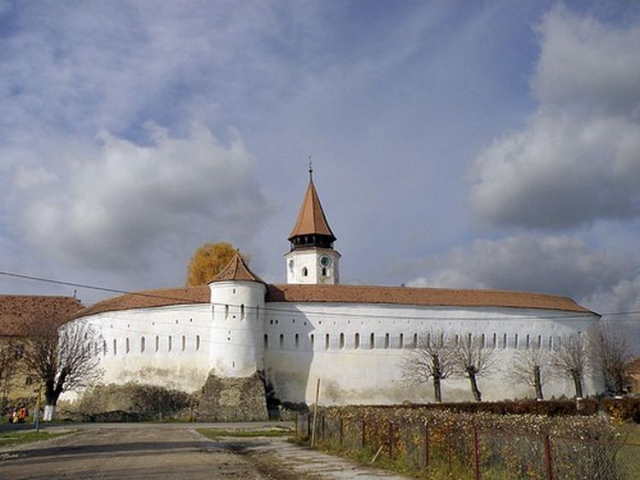Prejmer Fortress
Prejmer Fortress, or Tartlau as it is known in German, is located in the village with the same name, 18 km north west of Brasov, in central Romania.

Christine Leșcu, 22.03.2014, 14:25
The fortress is on UNESCO’s world heritage list. As it was inhabited by Saxons for years, Prejmer has a fortified church, which is typical of Saxon settlements in Transylvania. The church was very well prepared to protect the community, all through the Middle Ages, against Tartar and Turkish attacks, which left the village burnt and pillaged no less than 50 times. Adriana Stroe, an art historian with the National Heritage Institute, will revisit for us the history of the village of Prejmer.
Adriana Stroe: “According to tradition, the village was set up by the Teutonic Knights summoned by the Hungarian King to Barsa Land in 1211 to organize the defense of that area. The settlement was first documented in 1240. That year, King Bela the 4th offered Prejmer, Feldioara, Sanpetru and Harman to the Cistercian Monks’ Order in Cartza, who owned the area until the early 15th century. In 1454, Prejmer earned the right to hold an annual fair. That right was not just a privilege granted by authorities whenever they saw it fit, but it was only granted if the town was believed to have reached a certain level of economic development. In fact, Prejmer was, after Brasov and Codlea, one of the largest villages in Barsa Land. For instance, in 1510 it had 210 inhabited households, in 1556 it had 233 households divided into four neighborhoods and in 1584, when Prejmer earned the right to hold a weekly fair, the village had 328 houses made of stone and 210 wooden houses.”
For the lives of the inhabitants and their possessions to be well protected, the church in Prejmer was built and fortified to that end, so it has been well preserved to this very day. Here is Adriana Stroe with details: “What defines this compound is that, unlike other fortified churches, in Prejmer the defensive facilities are only located around the building, and the exterior of the church itself is not fortified. It was built in the early Gothic style by members of the Cistercian Order living in Cartza. What makes the church unique is its layout, originally a Greek cross bordered on the north and south by secondary areas. The most important changes in the original layout were operated in the first quarter of the 16th Century, after the church became property of the local community. The cross with all arms of equal length was altered into a so-called Latin cross. In the eastern arm of the cross, which hosts the choir, there is one of the oldest altarpieces in the country, dating back to the mid-15th Century. Under a royal order of 1427 regarding fortification works in Barsa County, in the mid-15th Century the church was enclosed in a roughly circular fortification wall, with a tower gate on the south and overlooked by four semicircular towers on the south-east, north-east, south-west and north-west. Access to the fortress was through a drawbridge over the moats, and within the walls halls were built on several levels, in order to keep the harvest and assets of each family during sieges or plunder raids.”
During sieges, people would leave the village and gather in the fortress, where they needed supplies to ensure survival over extended periods. This is why, apart from the storage rooms and the living quarters, the fortress also included wells, a mill, a bread oven and even a school. It was the strongest of the Saxon fortifications in Transylvania. The walls were reinforced over time, until the mid-18th Century. Since then, as the frequency of sieges gradually decreased, the areas within the fortification lost their importance and started being used for other purposes. Between 1963 and 1970, the Prejmer fortified Evangelical church compound was subject to large-scale restoration works, and today it is one of the best-preserved citadel-churches in Transylvania.






























